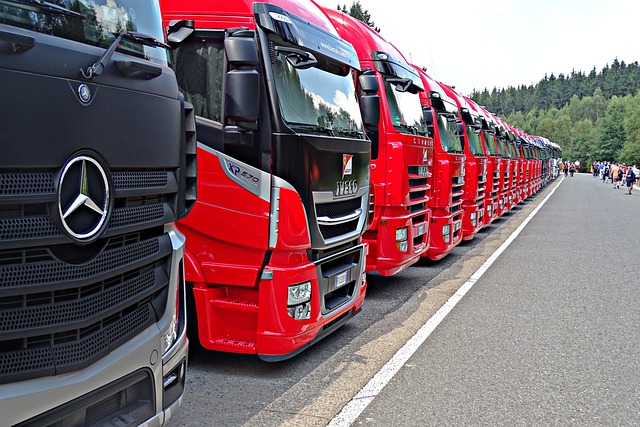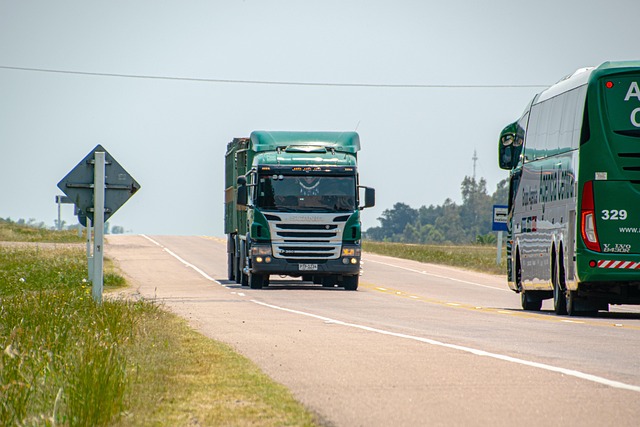Looking to register your car in California? This comprehensive guide walks you through the step-by-step process, ensuring a smooth transition. From understanding eligibility requirements for car registration to gathering necessary documents for a DMV visit, we’ve got you covered. Learn about the crucial dmv VIN verification and master the art of completing application forms accurately. By following these steps, you’ll be on your way to securing your vehicle’s registration in no time.
- Understand Eligibility Requirements for Car Registration
- Gather Necessary Documents for DMV Visit
- Perform Vehicle Identification Number (VIN) Verification
- Complete Application Forms Accurately
- Pay Registration Fees and Receive Plate Stickers
Understand Eligibility Requirements for Car Registration

Before you begin the registration process, it’s crucial to understand if your vehicle is eligible for registration in California. One essential step is to ensure that the vehicle has a valid and accurate Vehicle Identification Number (VIN). The Department of Motor Vehicles (DMV) conducts a VIN verification to confirm the vehicle’s history and identity. This includes checking for any outstanding liens, accidents, or other issues that could prevent registration.
Additionally, you’ll need to meet specific requirements related to the vehicle’s age, emissions standards, and insurance coverage. Consider using a mobile vin inspection or mobile vin verifier service for convenience, as these options allow for on-site, quick, and reliable VIN verifications. This can streamline the registration process by ensuring your vehicle meets all necessary criteria before you submit your application.
Gather Necessary Documents for DMV Visit

Before visiting a California DMV office, make sure you have all the required documents for car registration. This typically includes your vehicle’s registration certificate from the previous state, proof of insurance, and a valid driver’s license. Additionally, you’ll need to provide a completed Vehicle Registration Application form, which can be obtained online or in-person.
One crucial step is to undergo a DMV VIN verification process, ensuring your vehicle’s identification number (VIN) is accurate and matches the data on file. You can facilitate this with a mobile vin inspection or use a reliable mobile vin verifier to streamline the procedure. Having these documents ready will significantly enhance your visit’s efficiency, allowing you to navigate the registration process smoothly.
Perform Vehicle Identification Number (VIN) Verification

Before registering your vehicle in California, it’s crucial to perform a Vehicle Identification Number (VIN) verification. This process ensures that the car you’re about to register is legitimate and has not been reported as stolen or had its identity tampered with. You can initiate this step by checking the VIN on the vehicle’s registration documents, which should match the one etched into the frame of your car.
For added convenience, consider utilizing mobile vin verification services that allow you to complete this process from the comfort of your home or even while you’re waiting at the DMV. These services use advanced technology to cross-reference your VIN with national databases, providing instant results and peace of mind. Alternatively, many auto repair shops and service centers also offer vin inspection as part of their routine vehicle checks.
Complete Application Forms Accurately

When registering your car in California, accuracy is key when filling out application forms. The Department of Motor Vehicles (DMV) requires precise and complete information to process your registration smoothly. Start by gathering all necessary documents, including proof of ownership, vehicle identification number (VIN) verification, and any required fees.
Complete the forms meticulously, double-checking each detail. Ensure the VIN is correctly recorded, as it’s a critical piece of data for identifying your vehicle. Consider using a mobile vin inspection or verifier service to simplify this process. These services can provide on-site or remote verifications, ensuring your VIN is accurate and up-to-date before submitting your registration application.
Pay Registration Fees and Receive Plate Stickers

After completing your vehicle’s registration application, it’s time to settle the fees associated with car registration in California. The California Department of Motor Vehicles (DMV) requires a series of payments for vehicle registration, including a base fee and additional charges based on factors like vehicle type and emissions status. One crucial step before leaving the DMV is to undergo a DVW (Department of Vehicle Services) vin verification process, which confirms your vehicle’s identity using its unique Vehicle Identification Number (VIN). This can be done through a mobile VIN inspection or by utilizing a mobile VIN verifier for convenience.
Once your car passes the VIN verification, you’ll be directed to pay the registration fees and receive important documents. This typically includes plate stickers with unique identifiers, which must be displayed on your vehicle at all times. Ensure these stickers are correctly affixed to avoid any penalties. After this step, your vehicle is officially registered in California, making it legal to drive on public roads.
Registering a car in California is a straightforward process that requires understanding eligibility, gathering essential documents, completing accurate forms, and paying fees. Remember to perform a DMV VIN verification to ensure your vehicle’s authenticity. By adhering to these steps, you’ll be on your way to securing your vehicle’s registration smoothly and efficiently.



